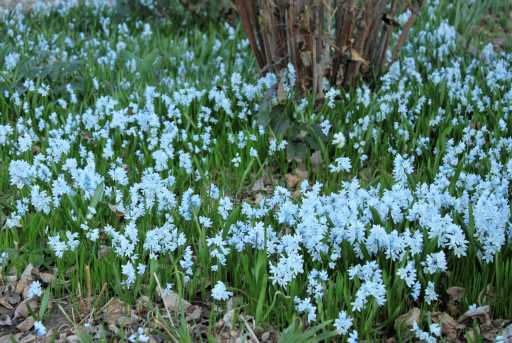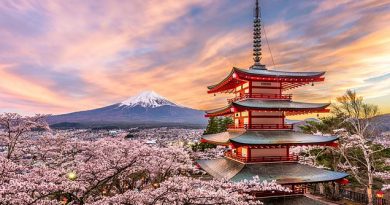Fall gardening tips: Blooms with fall bulbs in Colorado
Late last autumn, I knelt in a blustery November wind and dug in the ground, planting daffodil bulbs. I was resolved not to spend another spring deprived of their beauty. Too many autumns I missed, throwing out withered bulbs that I had no time to plant.
When life finds us on our knees, staring at torn soil, planting something may be the only small thing we can do. It’s an act of hope, burying a bulb and believing the quiet promise inside of it. Beauty overcomes broken ground.
Developing resilience
“A bulb’s strategy overall is to come up when conditions are best for it. They’re usually above ground for no more than a few weeks,” explained Marcia Tatroe, a well-known Aurora gardener and author. “Bulbs are the most reliable group of plants.”
In our Colorado climate, this is hopeful news. “The real reason we get bulbs in the ground in September is (to give them) the time to grow strong roots,” Tatroe said.
Strong roots and inner resources are the secrets of resilience in dry climates. Bulbs such as crocus, grape hyacinth and ornamental onion perform well in xeric gardens. Tulips demand dry conditions, originating not in maritime Holland but in arid Central Asia.
Among Tatroe’s favorite xeric pairings are snow iris Iris reticulata with cactus and succulents. “You get the silky iris with the prickly plants …. It’s kind of the leather and lace thing,” she smiled.
Bulbs beautifully extend the garden season. “The two times I want flowers when natives are not blooming is very early spring and late fall,” Tatroe said.
“I have bulbs that start in February, the crocus tulip and snow iris. By March, I have thousands of bulbs in bloom.”
Tatroe’s garden is a Xerces Society Pollinator Habitat. “The first time a bulb blooms, I get a honeybee on it. If you are at all concerned about honeybees, they have nothing else to eat that time of year.”
After the bloom cycle, the green foliage that remains is crucial to nourishing the bulb, that it might give its gifts again next year. “If you’re wanting your bulbs to multiply, don’t ever remove the foliage,” Tatroe said.
Painting with plants
Early in his childhood on the Eastern Plains, Rob Proctor remembers first seeing small spring tulips. The former director of horticulture at Denver Botanic Gardens, Proctor cultivates a garden masterpiece at his home, beginning with a palette of spring-blooming bulbs. Experiencing his garden is like stepping into a painting.
For those who love tulips, Proctor suggests Darwin hybrid tulips, Emperor tulips, and resilient species tulips.
“Tulipa tarda is one that everyone should have,” Proctor said, describing its yellow and white star-like flowers. It multiplies over time, naturalizing into the garden.
If deer frequent the area, Proctor advises foregoing tulips and planting daffodils and hyacinth instead. While daffodils originate in mountainous regions of Europe and need more moisture to succeed in Colorado, browsing wildlife tend to leave them alone.
The real gems of the garden may be the minor bulbs that unfurl their ephemeral petals when spring is still but a dream. Snow crocus, glory-of-the-snow, Siberian squill, grape hyacinth and snow iris are all diminutive beauties.
“They grow happily with short groundcovers, like wooly thyme,” Proctor said, suggesting a dandelion digger to create a small hole for planting these tiny bulbs. “They are of huge value to the pollinators. Crocus are an absolute favorite.”
For larger bulbs, Proctor’s planting technique is straightforward: “Get a spade and dig a hole!”
Within a hole that is 6 inches deep and 8 inches wide, Proctor plants a bouquet of five tulip bulbs rather than scattering a single bulb here or there. “Don’t line them up like you’re a park,” he laughed, “unless you’re actually a park!”
Renowned for his spectacular seasonal containers, Proctor also plants 30 to 40 blue flower pots with tulips, daffodils and hyacinths that he overwinters in a root cellar.
“These bulbs that come from a cold climate need a winter chill,” he said, emphasizing the importance of dark winter storage conditions that hover around 35 degrees. For those with limited space, this method of forcing spring blooms can be its own small miracle.
Picking a palette
Whether planting fall bulbs in containers or garden beds, Trisha Nungester of Tagawa Gardens suggests picking a color palette. Nungester ordered more than 200 varieties of fall bulbs for the garden center this year.
“It’s almost like hope and happiness in your garden when those sunny faces come up,” Nungester smiled. “Daffodils are one of my favorites … and last a long time as a cut flower.”
Daffodils and Scilla siberica are a yellow and blue combination that Nungester loves. “Scilla is not a familiar bulb to most people, but it is beautiful.”
“That’s why it’s good to plant (fall bulbs), because you know where your perennials are. If you have catmint that blooms in spring, tuck in some daffodils.”
Burying bulbs to a planting depth 2½ times the size of the bulb is a good guide. If working in heavy clay, Nungester suggests amending the soil for better drainage. Bulbs are best planted when daytime temperatures ease into the 60s, but shallow-planted iris need to be planted now to establish roots before cold weather.
Connecting generations
“My mom and grandmother grew iris, as most mothers and grandmothers do,” said Amanda Deerr-Miller, walking comfortably in her Front Range iris garden with a cup of coffee.
Silver plant markers meticulously note the names of more than 400 iris varieties in Deerr-Miller’s Denver garden. Carousel of Dreams. Orion’s Gate. Skydancer.
“When they lose their name, they lose their identity. I want to know its heritage and history,” she said. Deerr-Miller dedicates an entire bed to over 150 historic iris varieties, part of the Historic Iris Preservation Society.
“Whatever bloom you saw this year was set last year,” she explained, motioning to the remaining green-brown stems that feed the underground rhizome. After the bloom cycle, July and August tend to be the best time to divide and share iris.
Deerr-Miller’s passion for planting and hybridizing iris is now something she shares with her oldest daughter. “It’s one thing she can do just with me. It’s a way to be together.”
For anyone getting started, Deerr-Miller considers it a chance to learn by doing. “So many are stifled by fear. I say just try. If you don’t invest, you’re robbing yourself of the experience, the joy, and the process.”
Planting hope
If one is patient enough to work a garden long enough, unexpected joy will surely emerge.
To last year’s late-planted daffodils, I will add snow crocus, Tulipa tarda, Iris reticulata, Puschkinia libanotica, and allium. In your own garden, bring what you know. Bring what you don’t know. Plant a few bulbs in whatever soil is yours. You might find yourself filled with hope at what blooms.
Subscribe to our weekly newsletter, In The Know, to get entertainment news sent straight to your inbox.
Source: Read Full Article







